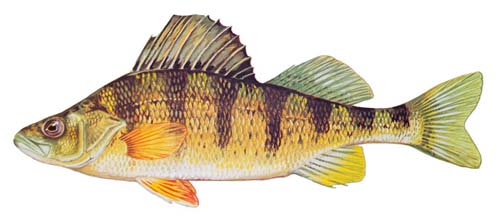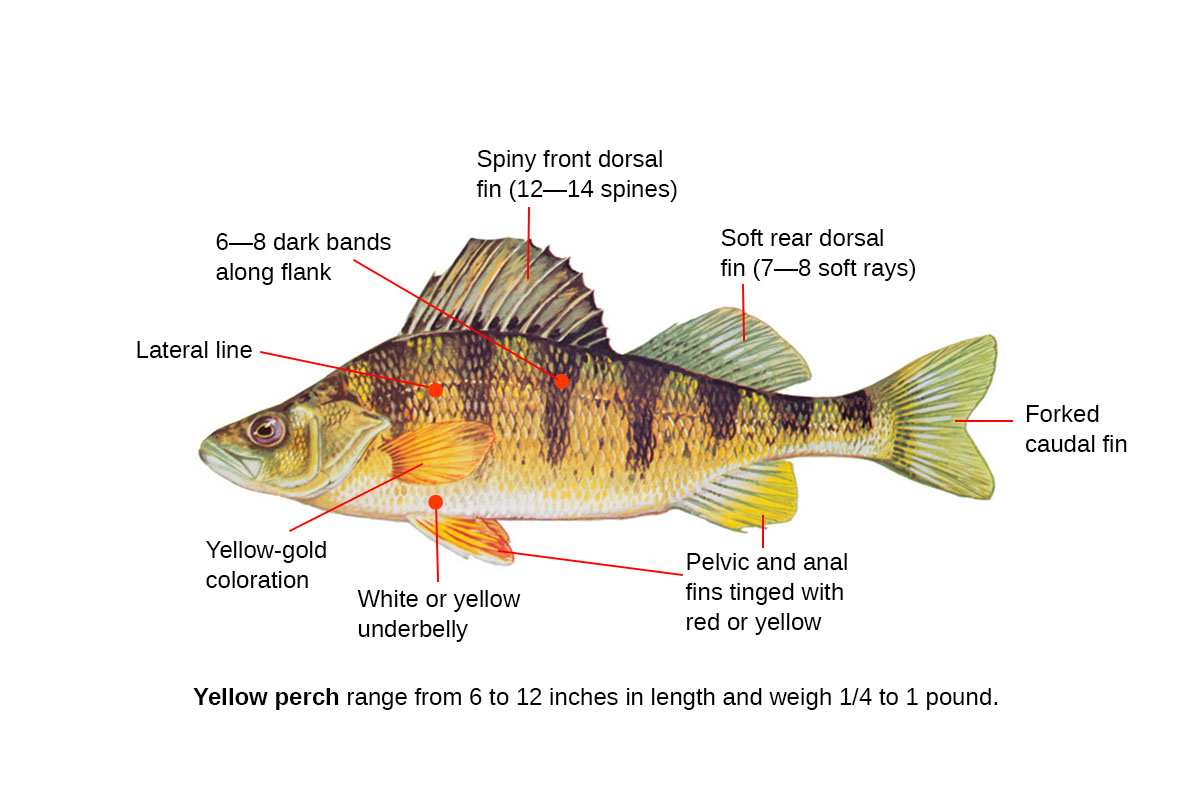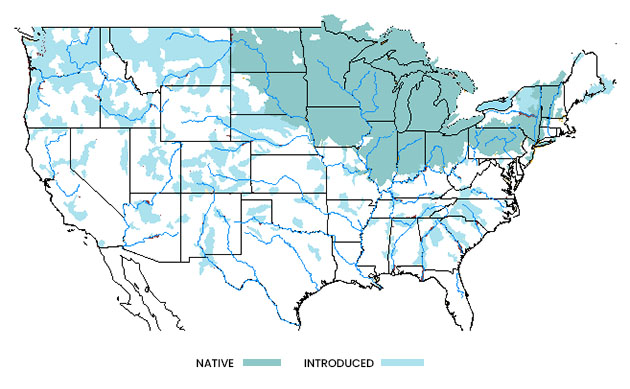Yellow perch are often targeted by anglers, especially those who enjoy ice fishing. The largest populations can be found in Canada and the northern U.S., though they’ve also been seen in South Carolina and a few other states further south. To catch these fish, anglers use various techniques, such as bait casting, drift fishing, fly fishing, still fishing, and trolling. 
Habitat: Lake, Pond
How to identify Yellow Perch
Yellow perch have yellow to yellowish gold coloration with 6—8 dark green, vertical bands extending from the top the back down the flank toward the belly. The belly is a yellow to white color. Average yellow perch range from 6—12 inches in length and weigh between 1/4 and 1 pound (.11 to .45 kg). Larger perch can reach up to 18 inches and weight over 1 1/2 pounds. Jumbo perch may reach over 3 pounds, but catches of this size are rare. Female perch grow faster and reach a greater size than males. Growth rate and size for perch may vary greatly from one body of water to another.

Yellow perch have two dorsal fins separated by a space. The front dorsal fin is spinny with 12—14 spines. The rear dorsal fin is soft-rayed with 12—13 soft rays and 2—3 spines. The caudal fin is distinctly forked and the anal fin has 2 spines and 7—8 soft rays. The pelvic and anal fins of adult perch may contain tinges of red, orange, and yellow. During spawn the pelvic fins of males may turn bright red. There is a lateral line extending from the top of the gills to the caudal fin.
Identifying characteristics:
- Yellow to gold coloration
- 6—8 dark bands along flank
- White or yellow underbelly
- Spiny front dorsal fin (12—14 spines)
- Soft rear dorsal fin (7—8 soft rays)
- Lateral line extending from gills to tail
- Forked caudal fin
- Pelvic and anal fins tinged with red or yellow
Yellow perch range from 6 to 12 inches in length and weigh 1/4 to 1 pound.
Where to catch Yellow Perch
Yellow perch are found all over southern Canada, and northeastern U.S. Many states stock these fish, which has led to its widespread distribution. It can be hard to find them in the south, midwest, and west. They are often found from South Carolina’s Santee River drainage up to the border of British Columbia, and eastward to the Great Lakes. In Canada, there’s a small, thriving population that lives from the Great Bear Lake to Great Slave Lake.

The following are habitats where you can catch Yellow Perch:
- Cliffs and Steep Shore Banks
- Freshwater Lakes and Ponds
- Freshwater Weed Beds
- Gradual Shores
- Lake and Pond Fishing Holes
- Inlets and Outlets
- Islands or Sand Bars
- Lily Pads
- Open Water
- Overhanging Trees and Bushes
- Piers, Docks and Pilings
- Points and Break Lines
- Rocks
- Shoreline Shallows
- Springs Holes
- Sunken Objects
- Walkways and Bridges
How to catch Yellow Perch
Yellow perch are highly desired by anglers. They can be caught year round and will put up quite a fight when hooked. They aren’t picky about bait and will eat just about anything. They feed year-round, even in winter, and are often a favorite of anglers who enjoy ice fishing. Spin casting is a good technique to use for these fish. Other effective methods include Yellow perch tend to swim in schools of 200 or more, so they are relatively easy to spot. The following are effective fishing methods and techniques for catching Yellow Perch:
Best Lures, Bait & Tackle to catch Yellow Perch
Yellow perch can be caught with both natural bait and lures. For natural bait, try worms or minnows. For lures, good options include spinners and spoons. The following are fishing lures, bait and tackle that can be used to catch Yellow Perch:



